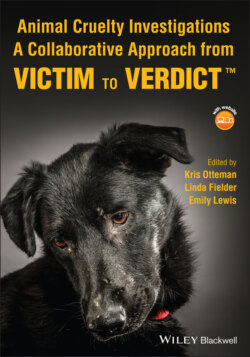Читать книгу Animal Cruelty Investigations - Группа авторов - Страница 138
3.9 Dental, Foot, and Hoof Care
ОглавлениеIn the wild, animals exist in their native terrain for which their bodies, including their feet and hooves, have specifically evolved over time. The same is true for animals' teeth. In their natural environment, an animal's teeth would become worn from foraging through grasslands or hunting and eating their prey. In captivity, where the conditions for which these animals were evolutionarily designed are not present, owners must intervene to provide maintenance services on their animals' hooves (Figure 3.7), nails, teeth, hair coats, etc. It is the responsibility of an owner to know what is considered routine maintenance or wellness care for the species of animals they own, and to provide that care often enough that conditions do not become painful or dangerous for their pets or livestock.
Figure 3.6 Photos should accurately represent the animal's body condition.
Source: Oregon Humane Society.
When responding to animal cases, it is important for the investigator to make themselves familiar with the type of routine care the animals in question should be receiving. Some issues, particularly dental problems, may not be immediately noticeable at first glance and will require a closer look at the animal, if it is willing, or by a veterinarian using sedation. Because conditions arising from lack of dental, hoof, and coat care are so common and can become so painful, even debilitating, this is an area worth the investment in time and research so that you are able to identify the issues, educate the owner, and, when necessary, articulate the evidence of criminal neglect.
Figure 3.7 Many animals, such as the pot‐bellied pig in this photo, require regular hoof and dental care to prevent painful overgrowth.
Source: Oregon Humane Society.
